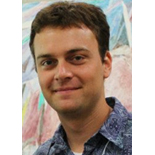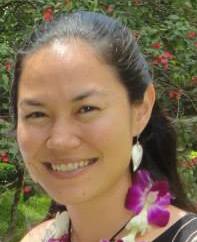By Micah Fisher and Tina Sablan for EDRblog.org.
Environmental challenges seem to have become more difficult and polarized over the years – climate change is a case in point, and one of many. As graduate students drawn to complex public policy dilemmas, we are convinced that multi-stakeholder collaborative processes provide distinctly viable options and a better way forward. There has never been a greater opportunity to embed and expand the use of Environmental Dispute Resolution (EDR) to our public policy solution lexicon.
In the fall of 2013, we were offered a unique opportunity to work with the national New Directions Committee (NDC) of the Environmental Public Policy Section of the Association for Conflict Resolution (ACR). As relative novices to this field of practice, we hope that our voice provides a different perspective, one that might reinvigorate the frustrated, challenge the experienced, and excite those who wish to join the conversation.
Our first assignment from NDC was to identify successes – or more accurately, to understand how researchers and practitioners define successful EDR processes. Take a second to think about that. How do you define successful EDR in such a diverse and complex landscape of issues? How do you compare water scarcity disputes of the Southwest, contaminated sites in the East, fishery grounds in the Pacific, and global climate debates?
The results of our literature review illuminate a movement that began during the early years of National Environmental Policy Act (NEPA) implementation. Environmental Dispute Resolution was born out of social movements and collective action, despite (or because of) a cumbersome policy umbrella, and it became increasingly relevant in certain forums. Early studies on EDR focused on analyzing whether and how agreements were reached. Subsequent reviews assessed process costs, timelines, and participant satisfaction. Today, with support from the US Institute for Environmental Conflict Resolution, there are major players at the federal level instituting large evaluation systems at the Environmental Protection Agency and Department of Interior.
But there’s so much more to understand about the impacts of EDR. Is EDR more efficient than other processes, and how do we know? Does it improve relationships? Do participants see this as a better, or at least a feasible, option? We also need to know how to improve the process, what we’re learning, how these lessons can be applied and adapted under different circumstances, and how we can achieve better outcomes for the environment and for our communities.
We suggest three ways forward. First, we see clear opportunities to promote Donald Schon’s vision of the reflective practitioner. Practitioners are often extremely busy and move from project to project, with limited time or ability to document, assess, synthesize, and compare what they are learning. We see a need for a more systematic approach by which individual practitioners can reflect on their role and impact, and learn from each other.
Second, we perceive important opportunities to revitalize and enhance project-level evaluations. Our initial review suggests that currently EDR is only systematically tracked at the federal level, though the perception remains that we need to continue to define and measure success in EDR at other levels too. Is EDR actually better for the environment and local communities, and is it more cost effective? Does EDR improve relationships and facilitate healing in our communities? Does it build better places to live and help address tough environmental challenges? We are not regularly asking these questions on a project-by-project basis. So, how do we know if we’re achieving our goals?
Third, we need to know how the language of EDR is being accepted, applied, and trusted by the public. Are collaborative problem-solving strategies gaining traction in public awareness and decision-making? Michele Straube raised this question during our session at the ACR conference in Cincinnati last October, reflecting on her Report Card on EDR in Utah. We believe this understanding, awareness, and application of EDR’s potential in the public policy arena is critical for the future viability – and visibility – of the field.
As newcomers to EDR, we do not pretend to know the answers. What we do hope to contribute is what we learned from the past, from literature, and from our conversations with practitioners, about what is possible for the future. At the ACR conference, we were inspired by the warm reception we received, and a genuine interest of many practitioners in convening regularly to continue this dialogue and advance a more reflective practice. We hope to be part of these conversations going forward, and that other students are encouraged to join as well.

Please email your comments to the EDR Blog Coordinator (Mara.Burstein@law.utah.edu) and consider writing your own EDR Blog entry. Tell us how you reflect on your experience before, during, and after mediation. How do you identify areas of success and improvement? What do you read, who do you talk to, and how do you challenge yourself to improve your practice? How do you engage clients and the wider community in EDR processes? What new directions do you see for the future of EDR?

Micah Fisher and Tina Sablan are both graduate students at the University of Hawaii at Manoa and degree fellows of the East-West Center. Micah is a PhD student in geography, and Tina is a master’s student in urban and regional planning. They have spent the past year working together with the New Directions Committee of the Association for Conflict Resolution’s Environmental Public Policy Section. They can be reached at micahrf@hawaii.edu and tinasablan@gmail.com.
